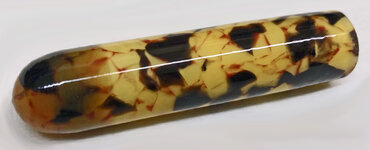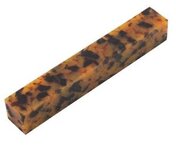egnald
Member
Greetings fellow IAP members,
My PSI Big Grabber mandrel arrived last week and so today I figured it was finally time to try it out. I've had a blank glued up for more than a week already, just waiting for this.
First of all, the nut on the back of the mandrel that is used to tighten the mandrel (by squeezing a bladder inside the tube) is too big for the through hole in my headstock - just slightly so the morse taper wouldn't go in far enough to stay tight. I cobbled something to make it work for now, but I need to come up with a better solution.
Having very little experience with this sort of thing, I had painted the inside of my blank white, which would have worked out OK, not the best, but at least OK for any standard tubed blank, but not for the material I chose to use for the closed end. It was a tortoise shell blank that I've been saving for quite some time. Anyhow, I turned it and realized I should have probably painted it black (or maybe dark brown). The picture really tells the story. I'm not even going to turn the lower tube. Time to figure out a new blank and cut some new brass tubes I guess. Argh!
Regards,
Dave
PS Once I got it to fit, the Big Grabber mandrel worked really - really good for what I was doing!

My PSI Big Grabber mandrel arrived last week and so today I figured it was finally time to try it out. I've had a blank glued up for more than a week already, just waiting for this.
First of all, the nut on the back of the mandrel that is used to tighten the mandrel (by squeezing a bladder inside the tube) is too big for the through hole in my headstock - just slightly so the morse taper wouldn't go in far enough to stay tight. I cobbled something to make it work for now, but I need to come up with a better solution.
Having very little experience with this sort of thing, I had painted the inside of my blank white, which would have worked out OK, not the best, but at least OK for any standard tubed blank, but not for the material I chose to use for the closed end. It was a tortoise shell blank that I've been saving for quite some time. Anyhow, I turned it and realized I should have probably painted it black (or maybe dark brown). The picture really tells the story. I'm not even going to turn the lower tube. Time to figure out a new blank and cut some new brass tubes I guess. Argh!
Regards,
Dave
PS Once I got it to fit, the Big Grabber mandrel worked really - really good for what I was doing!




